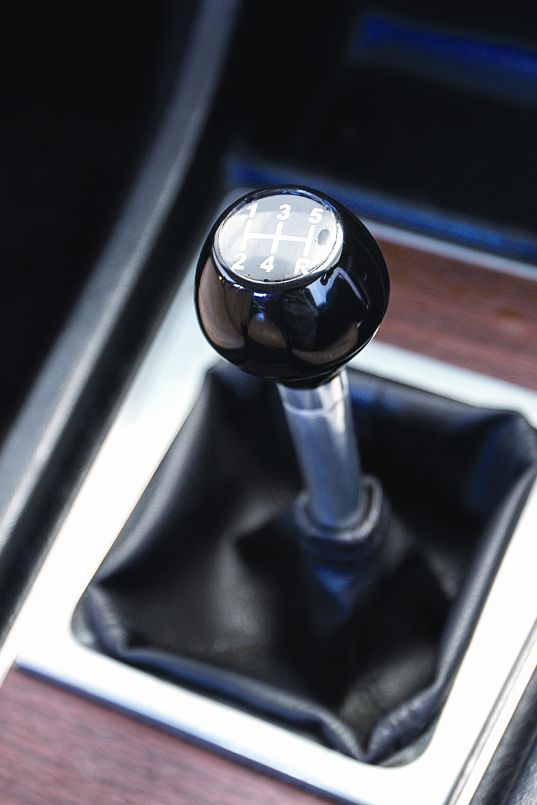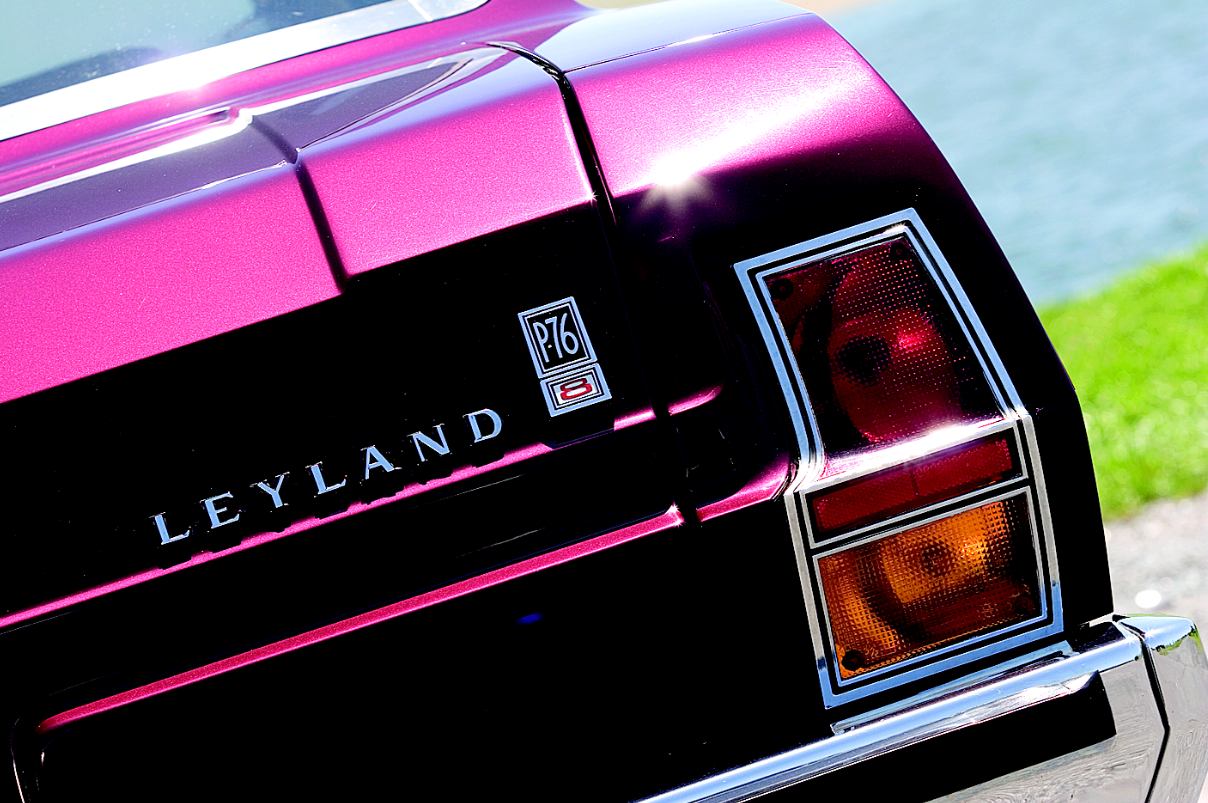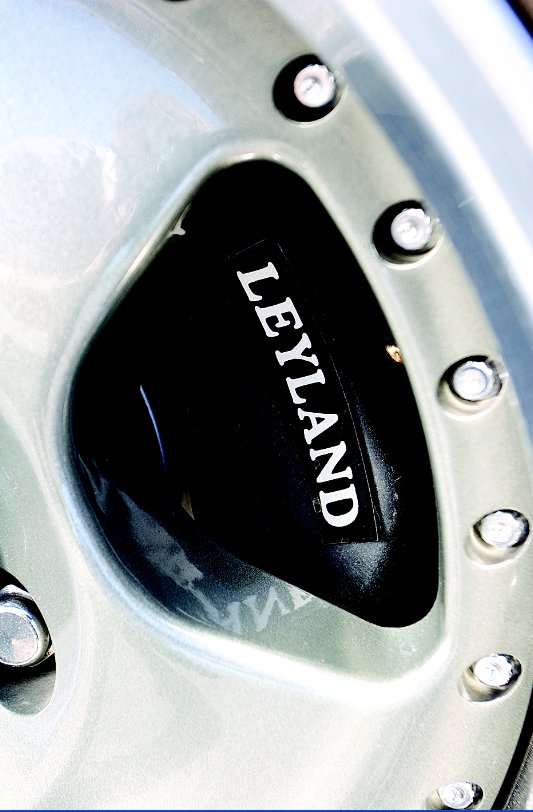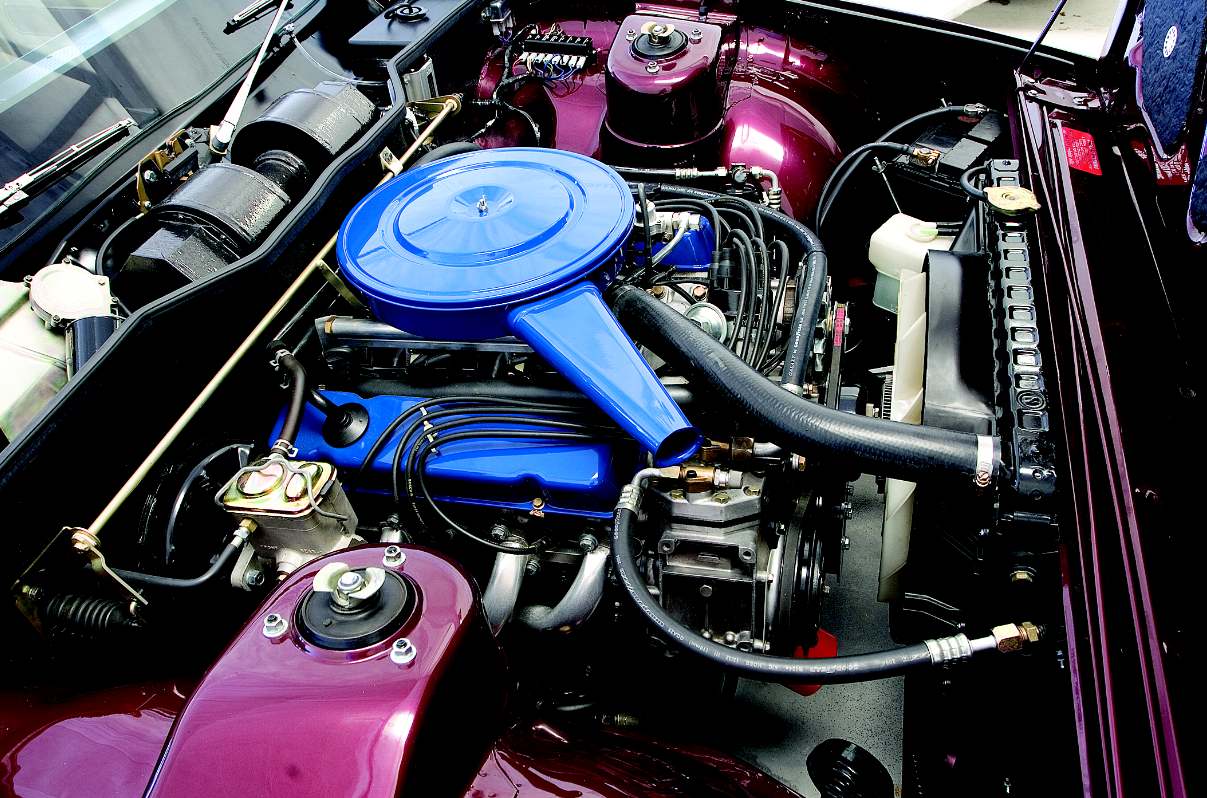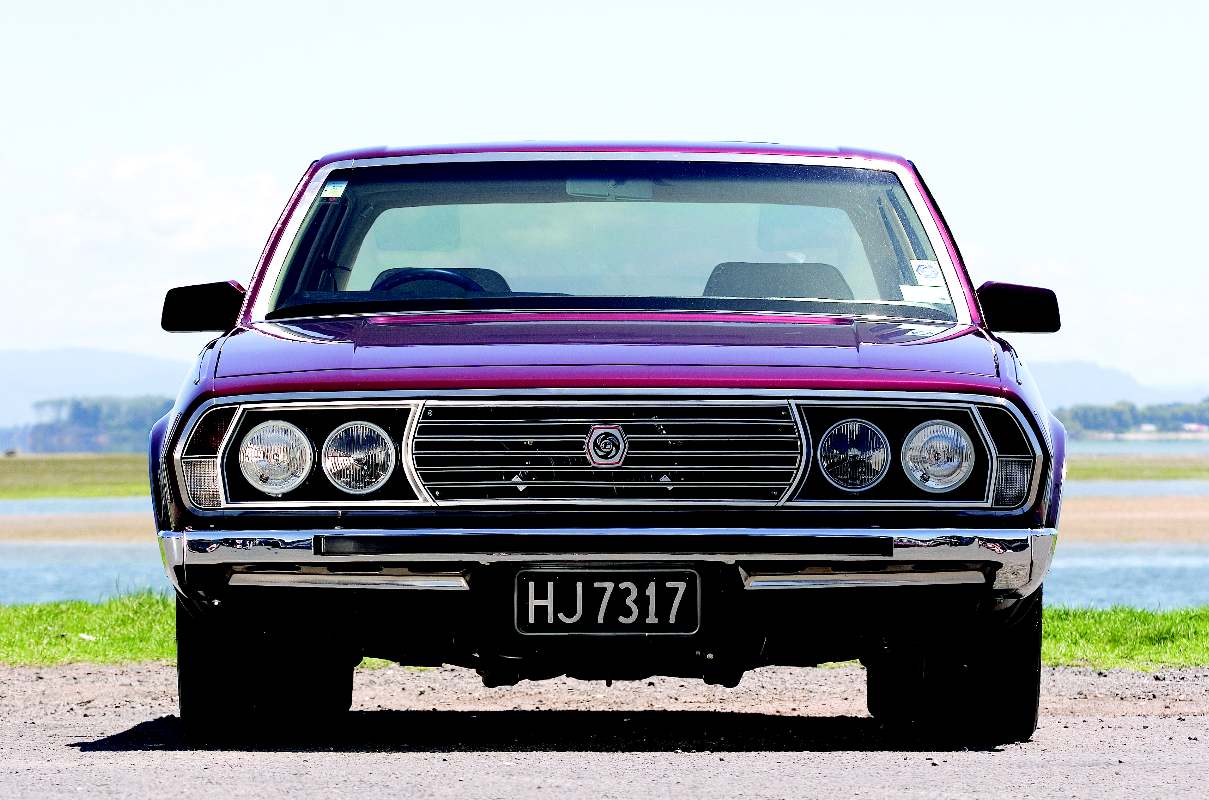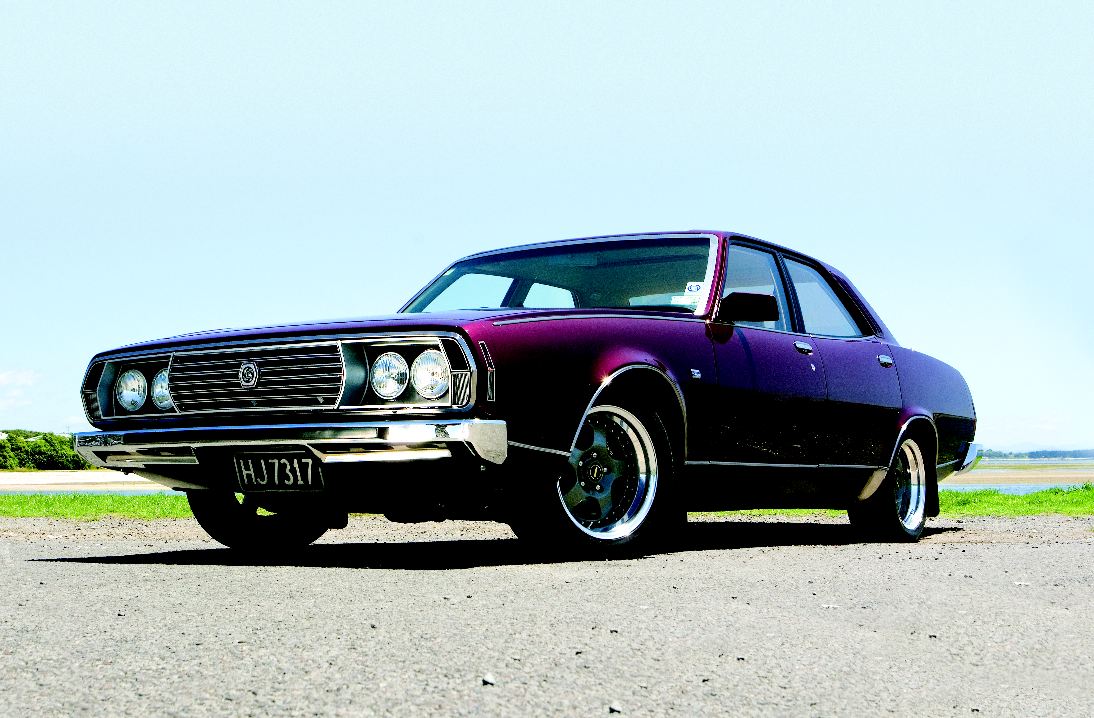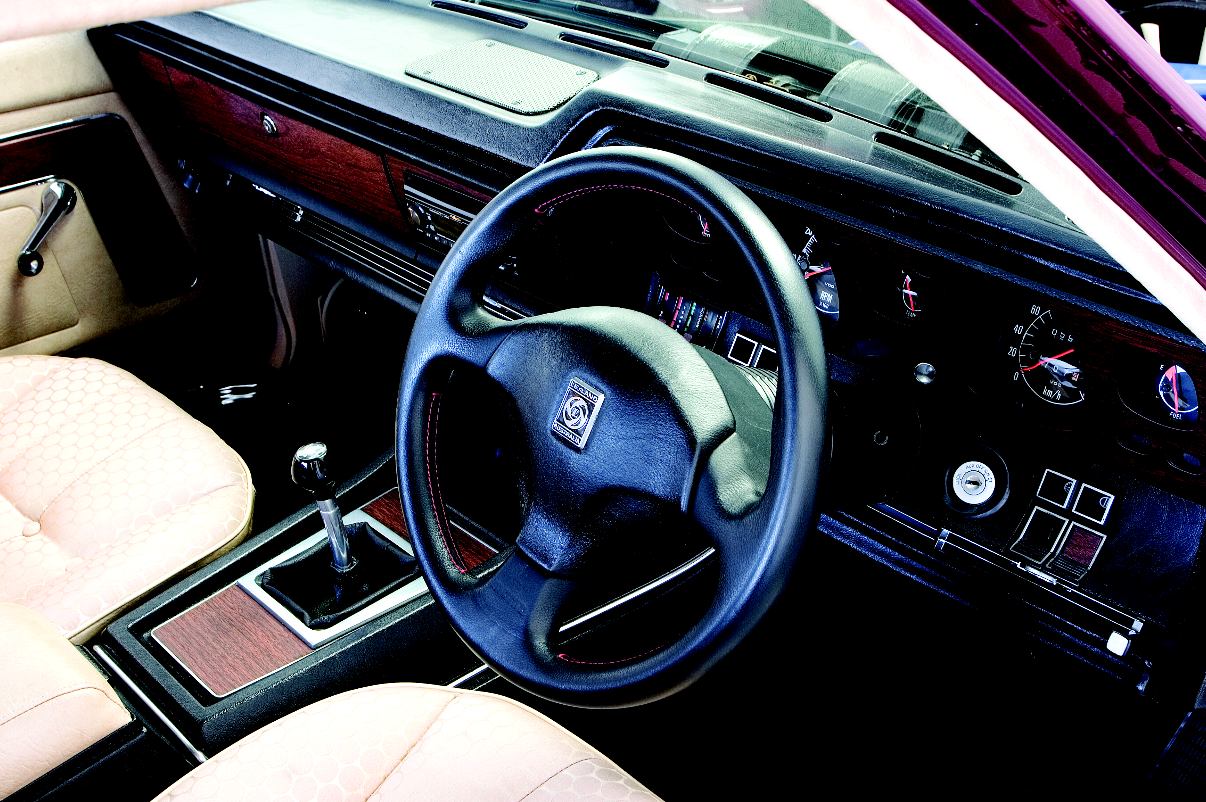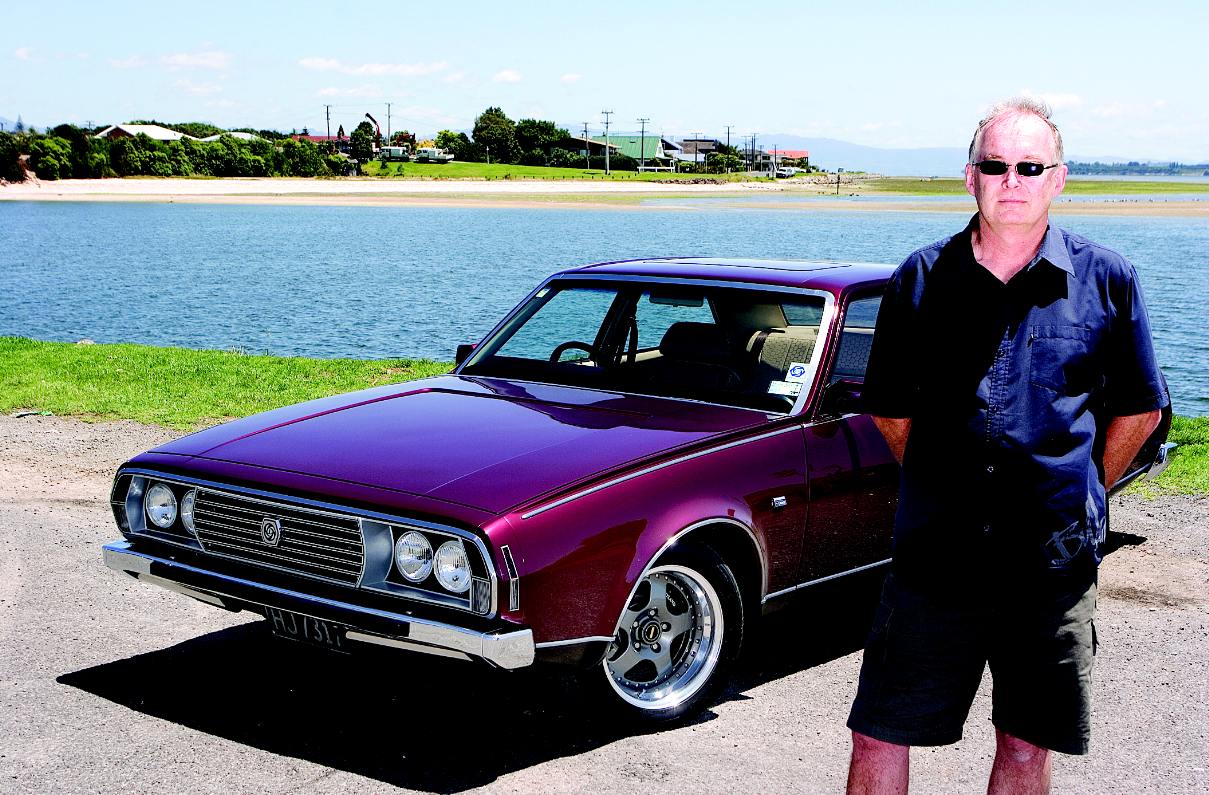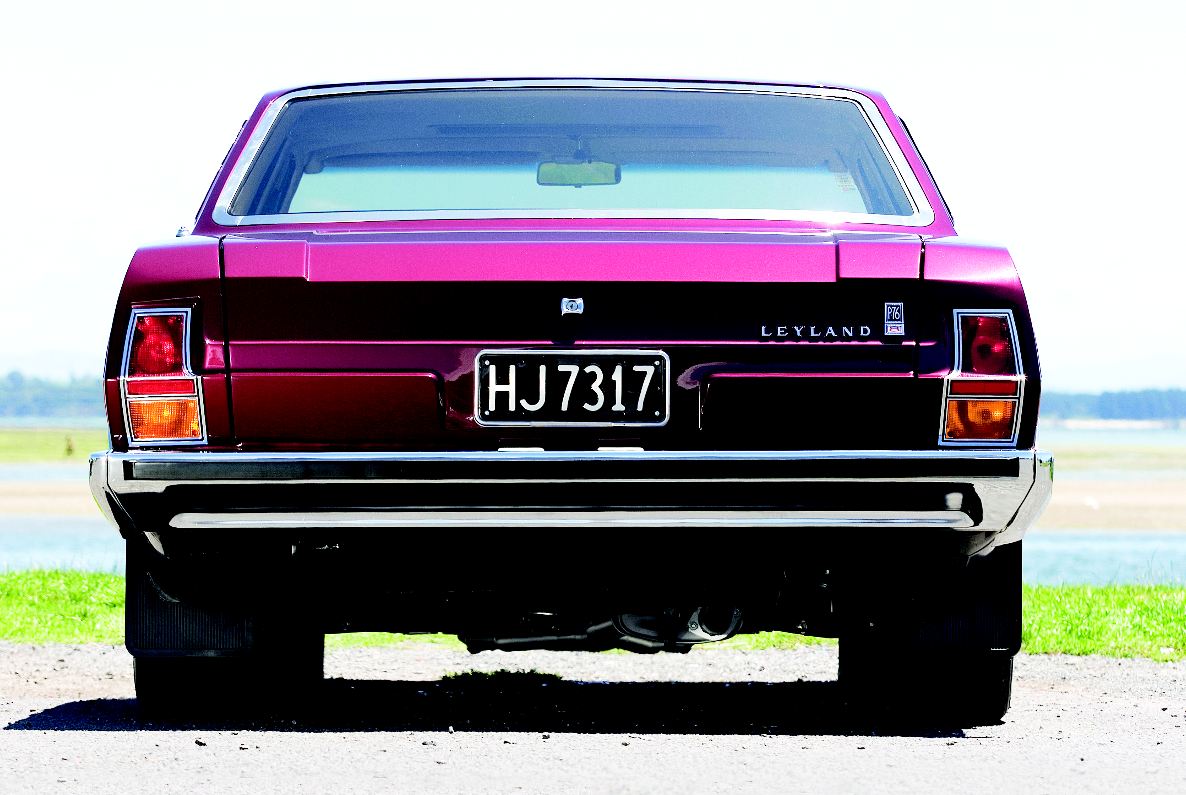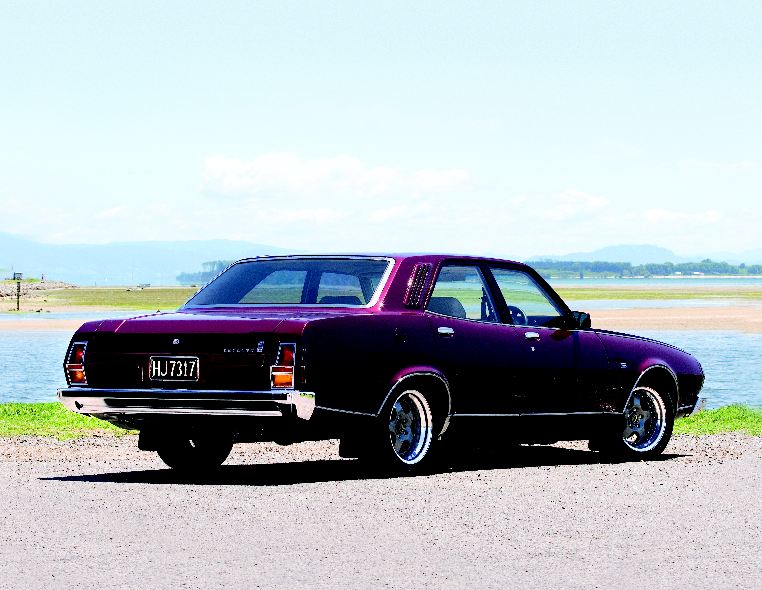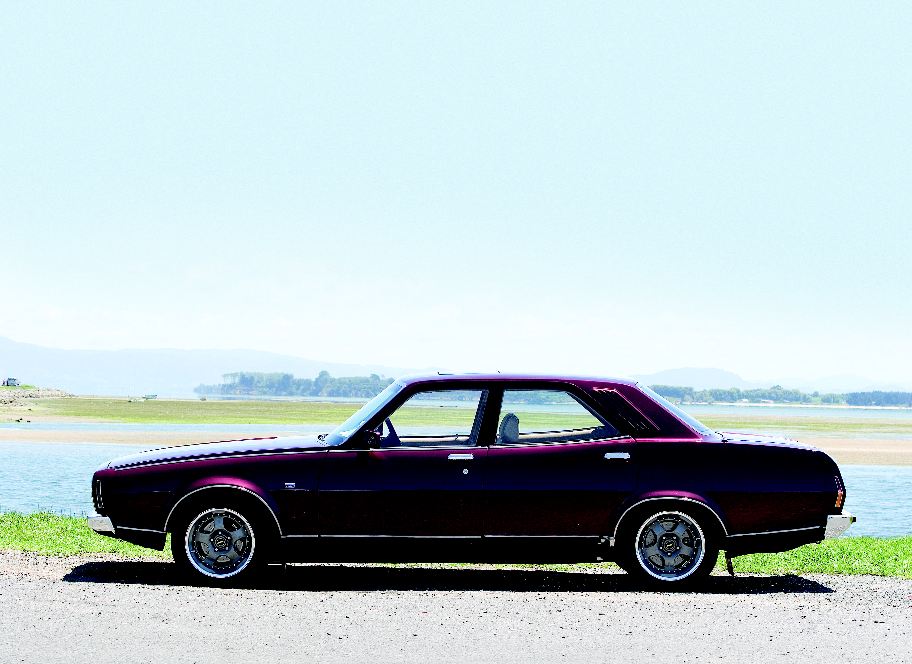data-animation-override>
“Published in New Zealand Classic Car Issue No. 195”

Anyone who tells you that the Australian P76 was a lemon is a prune. The management and infrastructure that brought the big Leyland to market were distinctly citric, but this example demonstrates how a P76 can be a nice ripe plum of a car.
I think I am correct in stating that in all the British Leyland years there was only one car that was only ever badged ‘Leyland’ — the P76. As such, it also speaks volumes for the marque and the company. All good things come to an end, they say, and most of them did under British Leyland management and usually a sticky and unpleasant end.
Like British Leyland, the Leyland P76 should never have happened, but when it did, the Australian engineers did an excellent job. Sadly, the great product they supplied was systematically destroyed by a combination of poor management and ongoing battles with an uninterested work force and supply chain.
British Leyland had some of the best engineers in the world, but the worst managers (and too many of them) — with some of the most militant, well, I hesitate to call them workers. It didn’t really matter what the engineers produced, they were fi ghting with one arm tied behind their backs. The design briefs they were given were half-cocked, burdened by under-funding and subsequently manufactured under inept quality control.
Bigger and tougher
It was clear that Australians needed a bigger, tougher car than any mass produced by Great Britain — and one that was also cheap to produce. The Morris Marshall of 1958, the short-lived Austin Freeway and the later front-wheel-drive Tasman and Kimberley were lost causes. It was obvious that the Australian arm of the British company would have to build bigger, tougher cars.
Consequently a study group began work in 1966, soon coming up with an ambitious plan for two new model lines which, with various engine options, would provide a wide range of cars. There would be a V8 and a slant-four derivation and, eventually, a V12 and a slant-six derived from that.
What were they thinking of? Frankly, why were they even being allowed to think along these lines?
V8 Land Crab
Meanwhile, in England, British Motor Corporation had merged with Leyland which, despite struggling itself, for some reason gave the Australians the thumbs up to go it alone on the proposed big car. At fi rst Leyland engineers under the guidance of David Beech fi tted a Rover V8 into a modifi ed Austin 1800, retaining the car’s front-wheel drive. It worked, but was considered too expensive to market as a rival to the then current Holden. The engineers then settled on a front-engined, rearwheel-drive car instead, and started drawing on a clean sheet.
Having been prepared to consider a car based on the Land Crab, why on earth did they not put the V8 into a strengthened Austin 3.0-litre body? That car was already engineered for rearwheel drive, and was already powered by a north-south straight six. The six-cylinder engine which fi nally ended up in the P76 was much lighter than the Austin 3.0-litre’s lump, so local engineers could easily have beefed up the Austin’s shell and fitted locally available transmissions and axles, with the whole exercise costing a quarter of what they eventually shelled out. They would also have made money out of a project that had faltered in the UK.
At that time, Leyland was also starting to engineer the conventional SD1 at Solihull, and that body — suitably strengthened and made into a sedan — could easily have been an attractive successor to a possible 3.0-litre Austin-bodied Australian special. Both of these cars, with the addition of some Australian know-how, would have been quick to engineer and would have suited the Australian market very well without the huge costs involved in manufacturing a completely new body and its trim.
However, the Australians decided to do the whole thing themselves, although with a little help from Europe. Generally, Australian car manufacturers are pretty good at styling — there haven’t been too many ugly Falcons or Holdens — but instead of recruiting local talent, Leyland Australia management went to Michelotti, the stylist of Triumphs from the Herald until the Stag.Alas, they chose a time when Michelotti was running short of ideas, and the Italian’s clothing, whilst not unattractive, was far from his best work. Worse, the Australians and Italians wouldn’t agree on the front or rear-end detailing, and it was left to Leyland Australia to fudge it to their own liking, clearly steering away from the more aesthetic approach of GMH or Ford Australia.
Let ’em go
Anyhow, having got clear of what they could or should have done, let’s look at what they actually did. The Leyland Australia engineers built a number of prototypes using Holdens as a base, and the vehicle they finally presented, ready for production, was very well engineered, had good handling and was very tough. Because it was making its own body and running gear Leyland had to purchase and commission brand-new tooling. The supply company contracted found itself running extremely late so late that, in fact, it was in the hands of the receiver at the due delivery date.
Leyland Australia now had to buy the tooling and prove it itself. Running this late on its production program — and suffering from strikes in the ports supplying much of the material—management decided to release the car anyway, focusing heavily in its advertising campaigns on the vehicle’s reliability and after sales service.
Engineered by Australians for Australians, the P76 was, on paper — and in practice — an exceptionally good car. Contemporary motoring magazines were very impressed with the P76 at launch, with a few misgivings about nit-picking stuff being kindly put down to the press cars being pre-production prototypes.
In the normal run of things these prototypes would have done hundreds of thousands of miles under strict test conditions, and those minor niggles put right before the car made it into Leyland showrooms.
However, Leyland ploughed on with its programme, despite shortages and lack of final testing, and managed to orchestrate a big pre-launch fanfare and, in the process, gathered in some pretty good reviews as the first few cars got out into the public domain. Whilst no customers seemed to experience major problems, almost every new P76 owner recorded lots of smaller ones. This was not helped by the fact that Leyland’s sales and service force was inadequately trained, prepared or stocked for such a crisis.
The P76 was advertised as ‘not your average car’, and Ford and Holden sales forces lapped it all up, loudly informing all those who walked into their showrooms that the P76 wasn’t even an average car.
Given a good, thorough fi nal development schedule the P76 could have been a brilliant competitor for the nose-heavy, clumsy cars coming out of American owned factories in Australia. Instead, a basically very good car got a pasting and, being a minnow in a small pond, Leyland Australia was not in a position to shout loudest, nor was it in a fi nancial position to rectify the faults or the increasingly bad press the P76 soon attracted. A small player trying an unconventional approach in a conservative and already well covered market, Leyland Australia had been ambitious to say the least.
Crushed
Leyland’s engineers were also given the task of making a Monaro/hardtop competitor and an estate car version of the P76. The resultant cars proved to be very good attempts, and 60 attractive Force 7 coupes as well as three station wagons were made. However, the engineers developing the coupe and estates were regularly pulled off the job to sort service problems on the sedan.
A British Leyland executive was sent out from the UK to sort the mess out but, being supplied with no budget for the task at hand — not to mention being only used to making a mess of things. A UK executive of the time was not real
ly well equipped to deal with the Australian problem. Instead he took the simplest route — which was to get rid of the problem and to shut the Australian operation down.
British Leyland needed to decide what to do with the remaining cars and the as yet unannounced Force 7 coupes. What was the most sensible thing to do with the 60 coupes already built? Well, management decided to crush 50 of them and put tenders out for the remaining 10. Yet another stunningly crass move by the suits.
Despite all these problems, after being in production for six months or so, P76 quality had improved, and although most of those people who had bought earlier examples said ‘never again,’ those who purchased the later cars were mostly very happy with them. The P76s even started to have some competition success, most notably through winning the Targa Florio stage of the World Cup Rally.
Leyland dressed up the P76 and called this special edition the Targa Florio as an attempt to kick-start sales. It was a good car, and these days, after the surviving 10 Force 7s, it is the most sought-after P76 model. Ironically, the most successful sales of P76 came as the announcement was made to close the Zetland, NSW plant in which the P76 had been manufactured. Some 650 P76 cars were made CKD and sold in New Zealand by MotorCorp in Petone using some different parts. In all between June 1973 and the end of 1974 16,915 Leyland P76s were sold in Australia, the majority of these having the wonderful, Rover-based aluminium 4.4-litre V8. The inline 2.6-litre six, based on the 2.2-litre engine of the Landcrab/Princess (which in itself was derived from the four-cylinder Maxi) did not gain great popularity, and only made up 7032 of those sales.
Stunner
Today the P76 has a strong and loyal following, and the cars are still used in competition; the V8 has had admirable success in racing and rallying, and its components are used consistently and to the present day by V8 performance tuners.
Although the P76 looked a little awkward in some specifications, with the right ride height and a good set of wheels it can look superb. This is exactly the area addressed by Steve Learmonth of Tauranga, the owner of our featured Leyland P76. An ex Motorcorp employee, Steve has a soft spot for the P76, and has owned this example for 18 years, during which time its restoration has been an ongoing project.
Steve has also incorporated a few subtle modifications, not least of which is fi tting a Link Electronic engine management system and tuning the V8 to produce a nice, rumbling exhaust note. The very effective tuning was done by Geoff at Dynopower. The transmission fi tted to Steve’s P76 is still the standard unit, but the original, massive and spindly steering wheel has been replaced with a neater and smaller leather-bound wheel from a Honda.
The most important modifi cation undertaken by Steve has been achieved by dropping the car’s ride height and fi tting a stylish set of Simmons alloy wheels and wider tyres. These make all the difference, and Steve’s P76 looks like the original ought to have done.
Steve doesn’t use his car like a hot rod, merely enjoying the easy torque of the P76’s all-alloy V8 and the car’s comfortable ride. It really is a shame that the Leyland suits couldn’t have got their act together with the P76 — if their production models had been presented in the manner of Steve’s P76, they would have done Australia proud.
The car’s paint job is simply magnificent, a real credit to the painter, (Clint at Elite Autopainters working with Chris at C J Panel works) and Steve’s restoration is millimetre perfect and beautifully done. Most likely this car is better than when it came out of the factory.
Leyland P76 Super Sedan – Specifications
Engine All-alloy V8
Capacity 4.4-litre
Valves Push-rod ohv, 16 valves
Fuel system 2 x twin choke Stromberg (as standard)
Max power 143kW (192bhp) at 4250rpm
Max torque 386Nm (285lb/ft at 2500rpm
Transmission Borg Warner four-speed manual or three-speed auto
Suspension Front CMacPherson struts Rear four-link with coil springs
Steering Rack and pinion
DIMENSIONS
Length 4890mm
Width 1911mm
Height 1391mm
Weight 1285kg
Wheelbase 2825mm
PERFORMANCE
Max speed 169kph (105mph)
0-96.5kph (60mph) 8.9 seconds
Words: Tim Nevinson Photos: Jared Clark


